+91 80883 54236
Novasolar that produces and sells solar water heaters.
Solar water heating system is a device that uses solar energy to heat water for domestic, commercial, and industrial needs. Heating of water is the most common application of solar energy in the world. A typical solar water heating system can save up to 1500 units of electricity every year, for every 100 litres per day of solar water heating capacity.
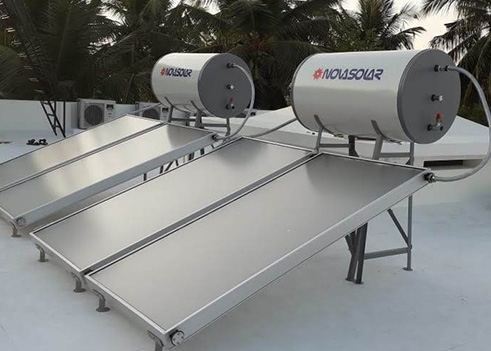
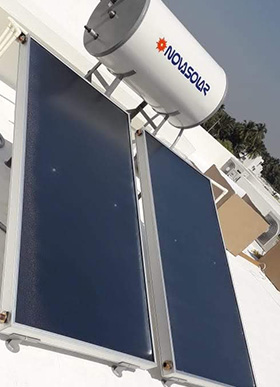
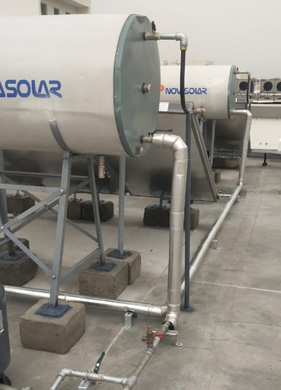
A solar water heating system consists of a flat plate solar collector, a storage tank kept at a height behind the collector, and connecting pipes.
The collector usually comprises copper tubes welded to copper sheets (both coated with a highly absorbing black coating) with a toughened glass sheet on top and insulating material at the back. The entire assembly is placed in a flat box.
In certain models, evacuated glass tubes are used instead of copper; a separate cover sheet and insulating box are not required in this case.
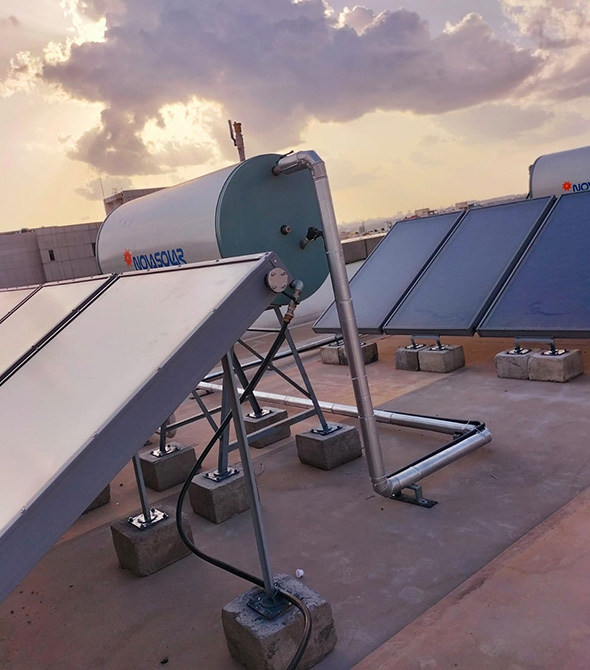
The system is generally installed on the roof or open ground, with the collector facing the sun and connected to a continuous water supply.
Water flows through the tubes, absorbs solar heat and becomes hot.
The heated water is stored in a tank for further use.
The water stored in the tank remains hot overnight as the storage tank is insulated and heat losses are small..
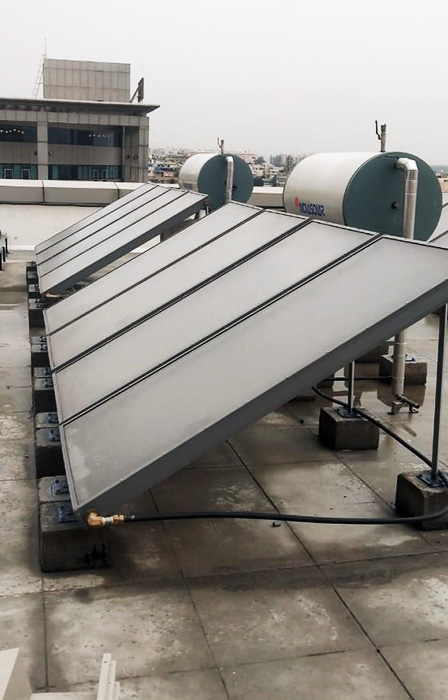
SWHs can be used at homes for producing hot water that can be used for bathing, cleaning, and washing. Solar water heaters (SWHs) of 100-500 liters capacity are suited for domestic application. Larger systems can also be used for a variety of industrial applications. Hot water at 60-80oC could be obtained through use of solar water heaters.
Fuel Savings: A 100 liters capacity SWH can replace an electric geyser for residential use and saves 1300 units of electricity annually.
Environmental benefits - A SWH of 100 liters capacity can prevent emission of 1.5 tons of carbon-dioxide per year.
Payback period - SWHs have a life span of 15-20 years. The payback period is about 3-4 years when electricity is replaced, 4-5 years when furnace oil is replaced and 6-7 years when coal is replaced.

Solar water heating has the following advantages:
Solar water heaters save electricity and thus money; electricity is becoming more and more expensive and its availability is becoming unreliable.
Solar water heaters are non-polluting.
Solar water heaters are safer than electric geysers as they are located on the roof
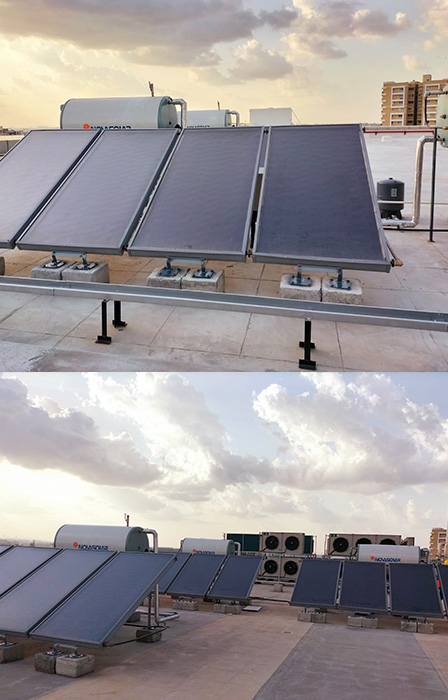
It is the heart of a solar water heating system.
It consists of an absorber plate which is coated on its sun facing surface with an absorbent coating, also called selective coating.
The absorber consists of a grid of metallic tubes and sheets. Water flows through the tubes. Sheet absorbs the solar radiation falling on it and transfers it to water.
The absorber plate is placed in a top open box to protect it from weather. The space between back and sides of the absorber and the box is filled with insulation to reduce heat losses. The front of the box is covered with a high transmittance glass plate.
Flat plate collectors are specified on the basis of their area and are of commonly 1x2 m size.
|
Application |
Typical Requirement of Hot Water at 600C. |
|
Household bathing using buckets |
30 liters per person per bath @60 0C |
|
Household bathing using shower with a mixing tap |
60 liters for 10-15minute bath@60 0C |
|
Shaving, while a tap runs |
7-10 liters@60 0C |
|
Household bathing in bathtub (one filling) |
100 liters@60 0C |
|
Wash basin with a mixing tap (hand wash, brushing of teeth, etc.) |
3-5 liters per person per day.@60 0C |
|
Kitchen washing |
2-3 liters per person per day.@60 0C |
|
Dishwasher |
40-50 liters per wash cycle@60 0C |
|
Clothes washing machine |
40-50 liters per cycle@60 0C |
The table below gives approximate likely electricity and money savings for typical 100 liters per day solar water heating systems located in different parts of the country. Likely savings of electricity and money by use of a 100 liters domestic solar water heater (using 2.0 sq.m collector area)
|
|
Northern Region |
Eastern Region |
Southern Region* |
Western Region* |
|
Expected no. of days of use per year |
200 days |
200 days |
250 days |
250 days |
|
Expected yearly electricity saving with use of full capacity, kwh |
950 |
850 |
1200 |
1300 |
|
Monetary savings at different prices of electricity, Rs/year |
||||
|
Rs. 4/kwh |
3800 |
3400 |
4800 |
5200 |
|
Rs. 5/kwh |
4750 |
4250 |
6000 |
6500 |
|
Rs. 6/kwh |
5700 |
5100 |
7200 |
7800 |
The use pattern and savings for southern region pertains to the typical climate of Bangalore, while those for western region relate typically to Pune climate.

Domestic solar water heating system does not need significant maintenance requirements. Occasional leakages in the plumbing could be easily repaired by common plumbers.
In case quality of water is hard, scale deposition in the collectors may result over the years. This may require descaling with acids for which it is best to contact the suppliers.
Broken glass may also have to be replaced by the suppliers.
If outside exposed surfaces are painted, the paint may have to be redone every 2-3 years to prevent corrosion of the surfaces.
|
|
Probable cause |
|
No water in the hot water tap |
|
|
Water not heated at all, although cold water flow is normal |
|
|
Water not hot enough or sufficient quantity of hot water is not available |
|
|
Little quantity of boiling hot water is received |
|





